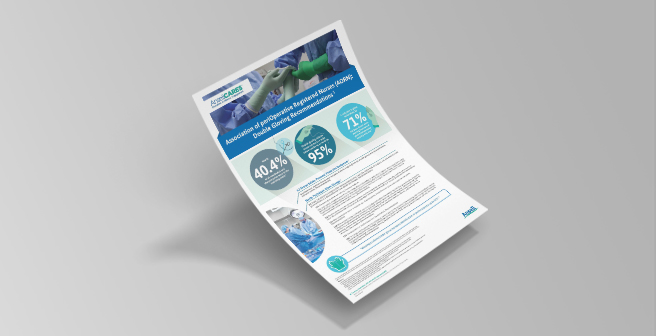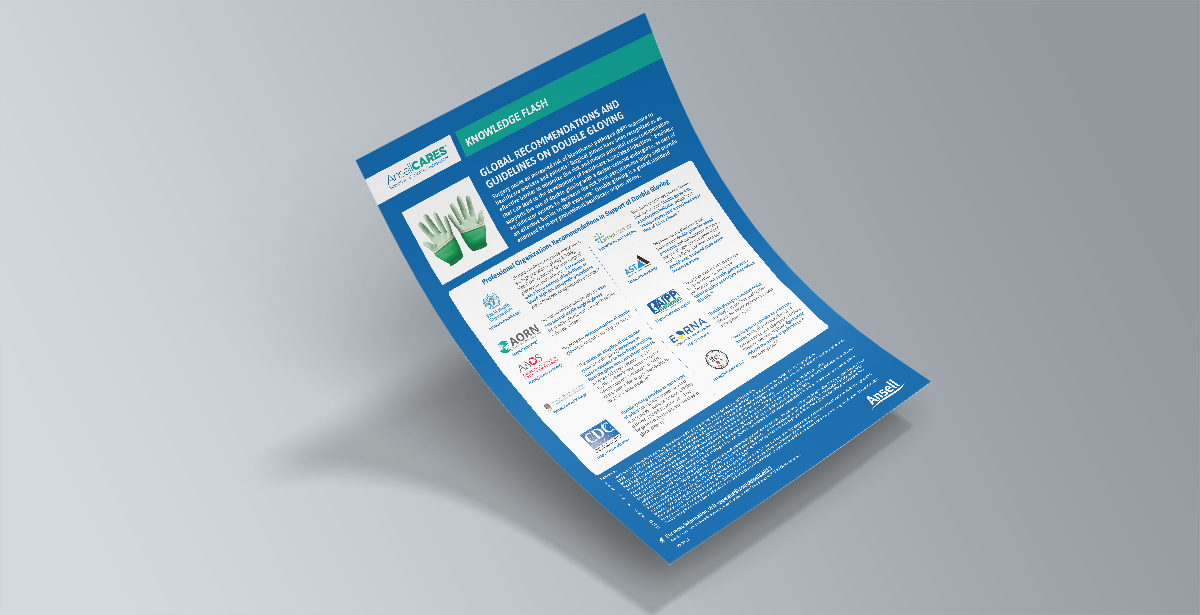Double gloving for surgical procedures, using a colored indicator system, is a globally endorsed standard of practice by a variety of healthcare related professional organizations. Endorsement from these organizations advocate the benefits of double gloving through evidence-based rationales for protection and compliance among healthcare workers (HCWs).
Wearing two pairs of sterile gloves during surgery is a practice HCWs use to reduce risk of exposure to bloodborne pathogens and protect from sharps injury. During a procedure, gloves worn by operating staff may perforate due to mechanical and chemical stresses. The main contributing factors described in the literature to glove perforation risks are the surgery complexity, the time worn, or the number and type of instruments used. The most common devices associated with injury are suture needles 23.7%, and disposable syringes at 16.7%.1
The standard of practice recommends wearing a colored underglove when double gloving to increase visibility of any glove breach.
There are advantages wearing the two layered gloves.
- Double gloving has shown an increased protection to perforations
- Less transmission of fluids when punctured
- Offers better protection than single gloves.2
AORN Double Gloving Recommendations
Global Recommendations and Guidelines on Double Gloving
References:
1. International Safety Center. U.S. EPINet Sharps Injury and Blood and Body Fluid Exposure Surveillance Research Group. Sharps Injury Data Report for 2020. https://internationalsafetycenter.org/exposure-reports/. Updated 2020. Accessed August 15, 2023.
2. Din SU, Tidley MG. Needlestick fluid transmission through surgical gloves of the same thickness. Occup Med (Lond). 2014;64(1):39-44.




